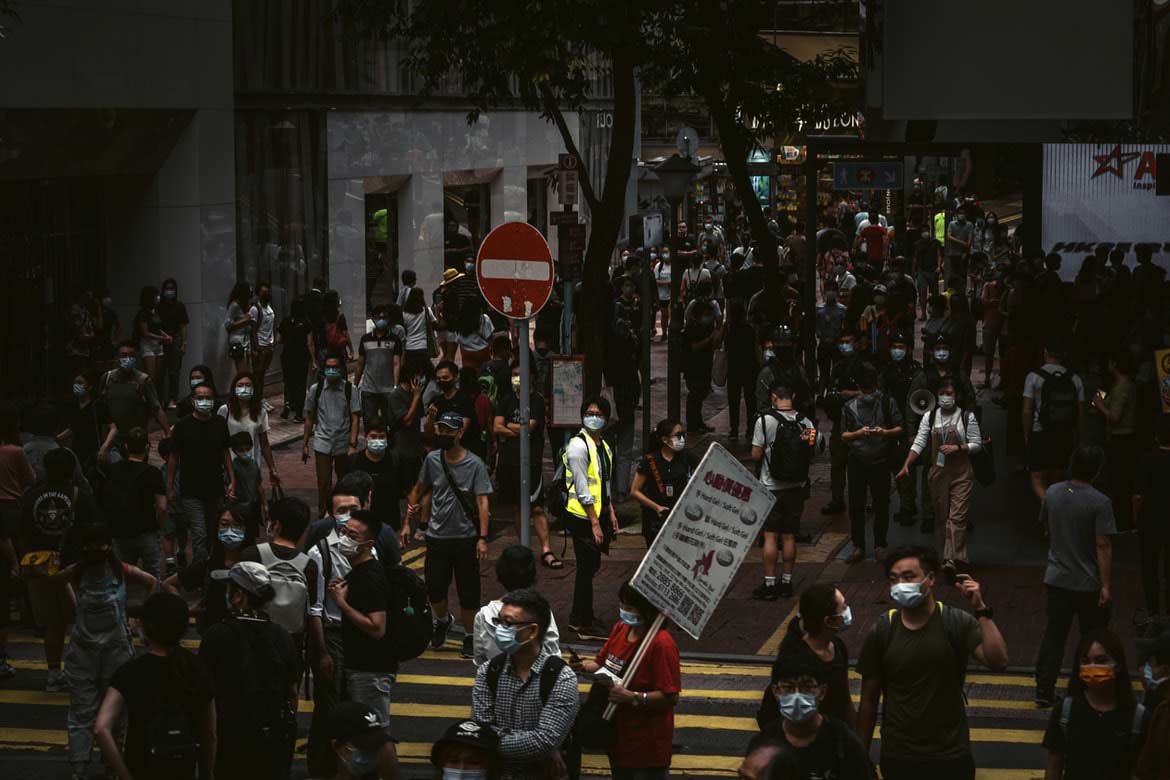Analysis: The COVID-19 Situation In Hong Kong, Singapore, And India

Table of Contents
Hong Kong's COVID-19 Response: A "Zero-COVID" Strategy
Hong Kong initially adopted a strict "Zero-COVID" strategy, aiming for complete virus eradication. This involved stringent measures impacting various aspects of life in Hong Kong.
Stringent Lockdown Measures and Border Controls
Hong Kong implemented early and strict border controls, including mandatory quarantines for all arrivals. Lockdowns were frequent, impacting businesses and daily life. While these measures were initially effective in containing early outbreaks of COVID-19 in Hong Kong, the prolonged restrictions had significant economic consequences, impacting various sectors, including tourism and retail.
- Early detection: A robust contact tracing system was implemented, aiming to quickly identify and isolate infected individuals.
- Rigorous contact tracing: This involved detailed investigation of contacts and enforced quarantines.
- Quarantine facilities: Dedicated facilities were set up to house those under quarantine.
- Travel bans: Strict travel restrictions were imposed, severely limiting international arrivals.
Vaccination Rates and Public Health Infrastructure
Hong Kong's vaccination rollout faced challenges, with slower-than-expected uptake among certain demographics. This impacted the overall effectiveness of the "Zero-COVID" strategy. While Hong Kong possesses a sophisticated healthcare infrastructure, the strain placed upon it by the prolonged pandemic led to increased pressure on healthcare workers and resources.
- Vaccination rates among different age groups: Significant disparities existed, with lower rates among older populations.
- Hospital capacity: At times, hospital capacity was stretched to its limits, creating a bottleneck in the healthcare system.
- Availability of medical resources: While generally well-equipped, the sustained demand for resources placed pressure on supply chains.
Singapore's COVID-19 Management: A Balanced Approach
Singapore adopted a more balanced approach, aiming to minimize severe illness and death while maintaining economic activity. This strategy was predicated on a strong vaccination program and targeted restrictions.
Gradual Lifting of Restrictions and Emphasis on Vaccination
Singapore prioritized a swift and effective vaccination campaign, incentivizing participation to reach high vaccination rates. This allowed for a gradual lifting of restrictions in a phased manner, minimizing economic disruption while mitigating risks.
- Vaccination incentives: Financial and non-financial incentives were used to encourage vaccination.
- Testing infrastructure: Extensive testing capabilities allowed for early identification of cases and effective contact tracing.
- Targeted restrictions: Restrictions were implemented selectively, focusing on high-risk activities and settings.
- Economic support measures: Government support packages cushioned businesses and individuals affected by restrictions.
Living with COVID-19 and Long-Term Preparedness
Singapore's strategy evolved towards "living with COVID-19," focusing on managing the virus rather than eradication. This involved significant investment in genomic surveillance and healthcare infrastructure to prepare for future outbreaks.
- Investment in healthcare technology: Focus on digital health solutions and data analytics to improve pandemic response.
- Public awareness campaigns: Sustained communication efforts to maintain public vigilance and compliance with health guidelines.
- Genomic surveillance programs: Continuous monitoring of virus variants to inform public health strategies.
India's COVID-19 Experience: A Nation-Wide Challenge
India faced immense challenges due to its vast population and diverse healthcare infrastructure. The COVID-19 pandemic significantly strained the country's healthcare system.
Overcoming Healthcare System Capacity Limitations
The initial surge of cases overwhelmed India's healthcare system, leading to critical shortages of oxygen, beds, and medical personnel. However, the country responded by expanding testing and hospital capacity, though unevenly across regions. Community-based initiatives played a crucial role in managing the crisis.
- Oxygen shortages: A severe shortage of medical oxygen became a major obstacle.
- Vaccine production and distribution: India's indigenous vaccine production capacity proved vital, but distribution challenges persisted.
- Managing case surges: The country struggled to cope with repeated waves of infections, particularly impacting rural areas.
Vaccination Drive and Variants
India launched a massive vaccination drive, significantly reducing severe illness and mortality. However, the emergence and spread of variants within the country posed ongoing challenges, highlighting the need for continuous monitoring and adaptation of strategies.
- Vaccine hesitancy: Addressing vaccine hesitancy in certain communities was critical for effective vaccination coverage.
- Variant surveillance: Genome sequencing efforts were crucial in tracking the evolution of the virus.
- Public health campaigns: Public health messaging played a critical role in communicating risks and promoting preventative measures.
Conclusion
This comparative analysis of COVID-19 in Hong Kong, Singapore, and India reveals the diverse and nuanced strategies employed. Hong Kong's "Zero-COVID" policy prioritized containment, Singapore balanced public health with economic activity, and India grappled with immense challenges. Each country's experience highlights the complexities of a global health crisis, emphasizing the need for adaptable strategies, robust healthcare systems, and effective public health communication. Further research into long-term effects and lessons learned is crucial for preparing for future outbreaks. Understanding the nuances of COVID-19 in Hong Kong, Singapore, and India, and the diverse responses to the pandemic, is paramount for global health security.

Featured Posts
-
 Spain Blackout Iberdrola Blames Grid Blame Game Intensifies
May 31, 2025
Spain Blackout Iberdrola Blames Grid Blame Game Intensifies
May 31, 2025 -
 May 23rd Orange County Game Scores And Player Statistics
May 31, 2025
May 23rd Orange County Game Scores And Player Statistics
May 31, 2025 -
 Un Jour En Mer Conseils Pratiques Pour Une Sortie Reussie
May 31, 2025
Un Jour En Mer Conseils Pratiques Pour Une Sortie Reussie
May 31, 2025 -
 Dragons Den Entrepreneur Sees 40 Profit Surge
May 31, 2025
Dragons Den Entrepreneur Sees 40 Profit Surge
May 31, 2025 -
 Achieving The Good Life Steps To Fulfillment And Happiness
May 31, 2025
Achieving The Good Life Steps To Fulfillment And Happiness
May 31, 2025
